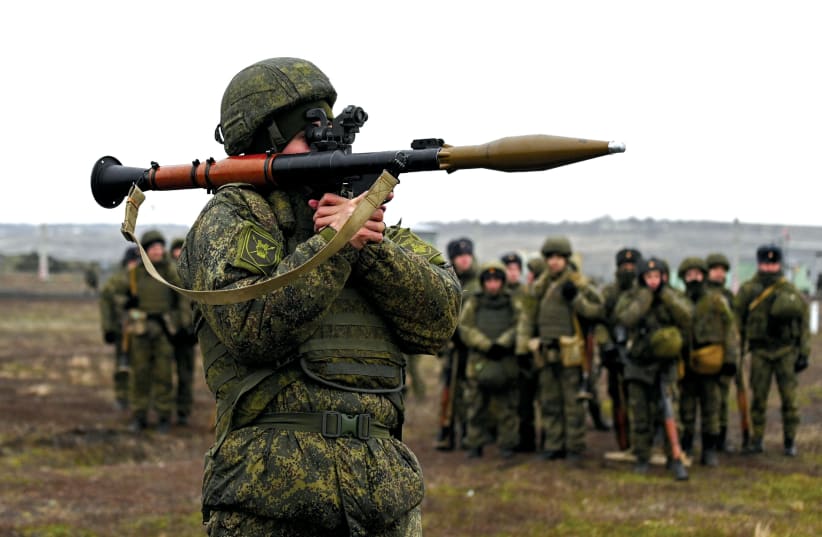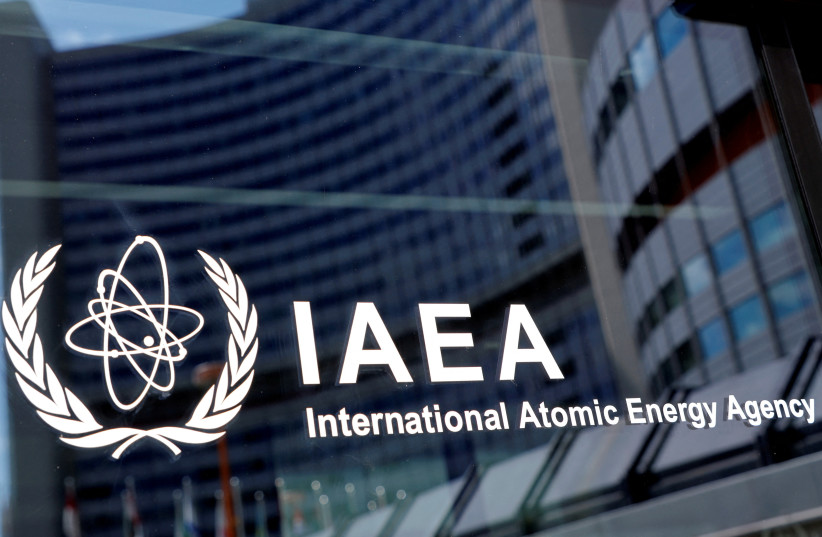US military aid is arriving in Ukraine amid Russia tensions. The UK has also sent military aid. Russia has condemned the rhetoric by the US, UK and others and says it is not planning an invasion. Moscow has even denied that China asked it not to invade its neighbor.
Both the US and Russia seem to have accused each other of possible false-flag-style operations. “Moscow expects provocations from the United States and the US-led Kyiv regime, without excluding military provocations, Russian Foreign Ministry spokeswoman Maria Zakharova said on Saturday,” Russia’s TASS News Agency reported.
Given these parameters, there are two possible explanations for what is going on. One is that Moscow is planning to invade, and the masses of soldiers and equipment it has moved into place are part of the plan. Another explanation is that it is signaling an invasion to get something else.
This second narrative would posit that Russia’s real move is about securing a diplomatic victory. Unlike Western powers, Moscow tends to view diplomatic and military moves as part of a concert in which all parts of the government coordinate in a top-down approach. This is a classic Clausewitz-style approach where war is politics or diplomacy by other means.
The US conducts war differently. It will often send diplomats to do one thing while its soldiers are cut out of the loop and doing something else. That is how the US fought and then lost the war in Afghanistan. It is also how the US chaotically waged the war in Syria and other places.
Russia may have studied the way the US and the West responded to Iran’s nuclear program to understand that the best way to squeeze concessions from the West is through threats of war.
During the lead-up to the Iran nuclear deal, Iran pretended to be developing a nuclear weapon; in this scenario, it presented the US Obama administration with a possible “diplomatic win” by “preventing” Iran from acquiring the nuclear weapon. Iran wanted a deal and an end to sanctions. All it had to do was wait for Washington to beg Tehran into a deal.
The Islamic Republic didn’t even have to write op-eds in Western media; instead, the US government and its political allies mobilized local groups to push hundreds of op-eds in US media selling the Iran deal. Pro-Iran lobbies popped up in the US, and Iran’s foreign minister was hosted at leading American think tanks and institutions.
Iran helped the US sell the deal that it wanted. The narrative was sold on the notion that “if there is no deal, there will be war.” But there was no evidence that there would be war. Iran couldn’t afford a war with the US, and there was no evidence that a war would ever break out.
The US public, weary of wars in Afghanistan and Iraq, had no interest in another war with Iran. So the talking point “a deal or war” was rolled out. American politicians who opposed the deal were considered “warmongers” or even “traitors” with “dual loyalty,” according to some far-left narratives in the US. Some narratives posited that it had bad relations with Iran only because of the “Israel lobby.”
Tehran won the Iran deal through the entirely fabricated threat of “war.” Iran didn’t even have to threaten war; it got US think tanks and commentators to invent a story about a possible “war.”
Now Russia has seen and learned from this scenario. It knows that when you put “war” on the table, the US will want “diplomacy” as a way to achieve a “win.” Russia, unlike Iran, couldn’t count on US think tanks and commentators and a Russian lobby in the US to hand it this narrative of “we need a deal with Moscow to stop a war.” This is because Russia is largely persona non grata in Washington due to claims it meddled in US elections.
Also, still raw are the bad memories of the “reset” when former US secretary of state Hillary Clinton presented Russian Foreign Minister Sergey Lavrov with a button saying “reset” and appeared to blame the former administration of president George W. Bush for bad relations. After all, it’s now clear that there was no need for a “reset” in US-Russia relations, like in the way Moscow sold the Obama administration the notion that America was at fault for the bad relations.
Russia has largely had a one-track policy since 2000. It continually tells US leaders that bad relations are Washington’s fault. The Obama administration bought this, and so did the Trump administration. But the current administration has long memories.
This means Russia can’t get the US to sell itself the theory that “the US is at fault, so we need to make a deal with Russia.” Moscow has therefore put a very real military threat on the table.
It’s not entirely clear what Russia wants in Ukraine or what its excuse for an invasion would be. It doesn’t have demands like Iran, such as sanctions relief. There are arguments that it wants NATO not to expand into Ukraine and that the mostly Western military alliance should roll back other assets it has positioned close to Russia.
RUSSIA’S OVERALL narrative is that talk of an “invasion” is fake and that talk of invasion is “empty and unfounded.” However, there are serious questions about what Russia is up to. It may be trying to create a situation where the US thinks it can sign a “deal” that allows both sides to save face, and therefore the US can be said to have prevented “war.”
This would make Putin and Biden peacemakers, and they could get a Nobel Peace Prize, the kind that Obama won in his first term having never accomplished anything peaceful. This would be an epic attempt to create peace out of a provocation, preventing a totally unnecessary war. Whether that peace would resolve the Donbas crisis is unclear, but it likely wouldn’t.
Nevertheless, Russia would like to show that it got the West to back down. It also wants to test how the West will respond. So far, it has seen various contradictory statements from the West. It sees NATO disunity. It has seen how Germany tends to take Russia’s side or remains neutral. It has seen what Turkey will do. This means it can test the West without necessarily doing anything.
Whether the Russians have modeled their behavior on the Iran deal and how Tehran tests the West is unclear. Another model for Russia may be how Turkey uses threats to achieve diplomatic victories and get what it wants, or how China tends to create faits accomplis at sea to get things it wants.
These initiatives often have results. Turkey threatened to invade Syria’s Afrin, attacking a peaceful Kurdish region for many years. Eventually, it did invade in 2018, largely with acceptance and a green light from Moscow, Washington, NATO, the UN and EU. Ankara then ethnically cleansed Afrin.
Russia knows that this model works. Western countries no longer do anything, and they are afraid to stand up to authoritarians. This means Russia might go farther than Iran does. The Islamic Republic relied on the West to sell itself a deal; Moscow can’t rely on the West to sell itself appeasement. This is because it already appeased Russia in other places.
Russia’s calculation must look at the Iran model and other examples to see if it can get what it wants in Ukraine without a war. Once the war begins, it could be unpredictable and can’t easily be stopped.
Russia’s recent wars, with countries like Georgia, or in Syria, were never of the kind that might happen in Ukraine. Moscow’s role in Crimea and Donbas in 2014 is also not a model for the larger moves being made today. It also justified its role there through historic claims or use of locals.
A move by Russia’s actual army would be a very different story this time.

